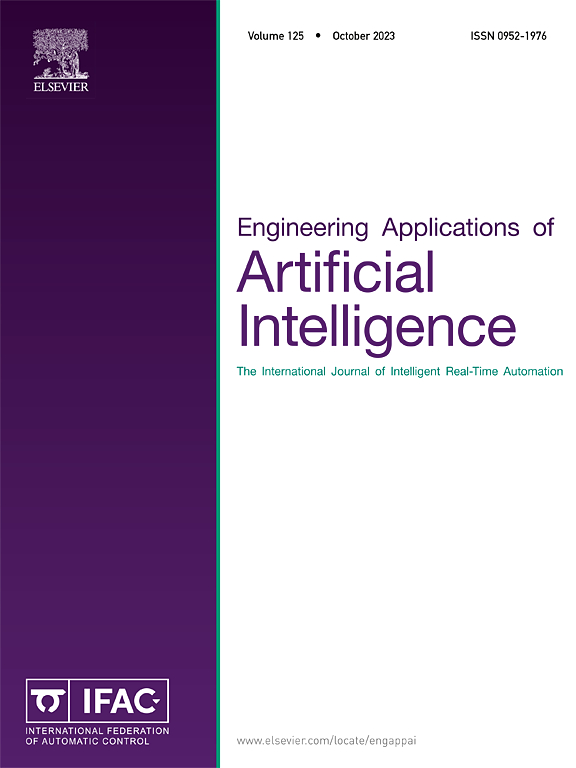A Lightweight Detection and Recognition Framework for cigarette laser code
IF 8
2区 计算机科学
Q1 AUTOMATION & CONTROL SYSTEMS
Engineering Applications of Artificial Intelligence
Pub Date : 2025-07-25
DOI:10.1016/j.engappai.2025.111777
引用次数: 0
Abstract
Automatic detection and recognition of laser codes on cigarette case is important in distinguishing the authenticity of cigarettes. However, detecting and recognizing cigarette laser codes presents a challenging industrial problem due to the intricate background of cigarette images. In this paper, a Lightweight Detection and Recognition Framework (LDRF) is proposed to detect and recognize cigarette laser code. The LDRF model consists of the Lightweight Detection Network (LDNet) and the Lightweight Recognition Network (LRNet). In the LDNet stage, a lightweight feature extraction network is proposed to extract features of the cigarette code area. Furthermore, a bidirectional feature pyramid network (BiFPN) feature fusion structure is introduced to tackle the multi-scale feature fusion challenge in cigarette code detection scenarios. Notably, alignment and normalization of all features channels are conducted to reduce computational requirements in the post-processing stage, enabling precise detection performance while significantly reducing parameters and computational complexity. In the LRNet stage, an integrated network architecture is designed to enhance the fusion of visual and temporal features. Furthermore, a combination of bidirectional temporal convolutional network (BiTCN) and Transformer is employed in the feature extraction stage to differentiate between background and characters, as well as capture the interdependence among different characters. Specifically, DownSampling is utilized to adjust the size of input images and Merging or Combining methods are applied at each stage to capture multi-level features. Experimental results demonstrate that the proposed LDRF method provides better performance than state-of-the-art models, and achieves trade-off between accuracy and speed.
卷烟激光码轻量化检测识别框架
烟盒激光码的自动检测与识别是鉴别香烟真伪的重要手段。然而,由于香烟图像背景复杂,检测和识别香烟激光码是一个具有挑战性的工业问题。本文提出了一种用于卷烟激光码检测与识别的轻型检测识别框架(LDRF)。LDRF模型由LDNet (Lightweight Detection Network)和LRNet (Lightweight Recognition Network)两部分组成。在LDNet阶段,提出了一种轻量级的特征提取网络来提取香烟编码区域的特征。此外,引入了双向特征金字塔网络(BiFPN)特征融合结构,解决了卷烟码检测场景中多尺度特征融合的难题。值得注意的是,对所有特征通道进行对齐和归一化,以减少后处理阶段的计算需求,在显著降低参数和计算复杂度的同时实现精确的检测性能。在LRNet阶段,设计了一个集成的网络架构,以增强视觉特征和时间特征的融合。在特征提取阶段,采用双向时间卷积网络(BiTCN)和Transformer相结合的方法来区分背景和字符,并捕捉不同字符之间的相互依赖关系。具体来说,DownSampling用于调整输入图像的大小,并在每个阶段使用合并或组合方法来捕获多层次特征。实验结果表明,所提出的LDRF方法比现有的模型具有更好的性能,并且在精度和速度之间取得了平衡。
本文章由计算机程序翻译,如有差异,请以英文原文为准。
求助全文
约1分钟内获得全文
求助全文
来源期刊

Engineering Applications of Artificial Intelligence
工程技术-工程:电子与电气
CiteScore
9.60
自引率
10.00%
发文量
505
审稿时长
68 days
期刊介绍:
Artificial Intelligence (AI) is pivotal in driving the fourth industrial revolution, witnessing remarkable advancements across various machine learning methodologies. AI techniques have become indispensable tools for practicing engineers, enabling them to tackle previously insurmountable challenges. Engineering Applications of Artificial Intelligence serves as a global platform for the swift dissemination of research elucidating the practical application of AI methods across all engineering disciplines. Submitted papers are expected to present novel aspects of AI utilized in real-world engineering applications, validated using publicly available datasets to ensure the replicability of research outcomes. Join us in exploring the transformative potential of AI in engineering.
 求助内容:
求助内容: 应助结果提醒方式:
应助结果提醒方式:


